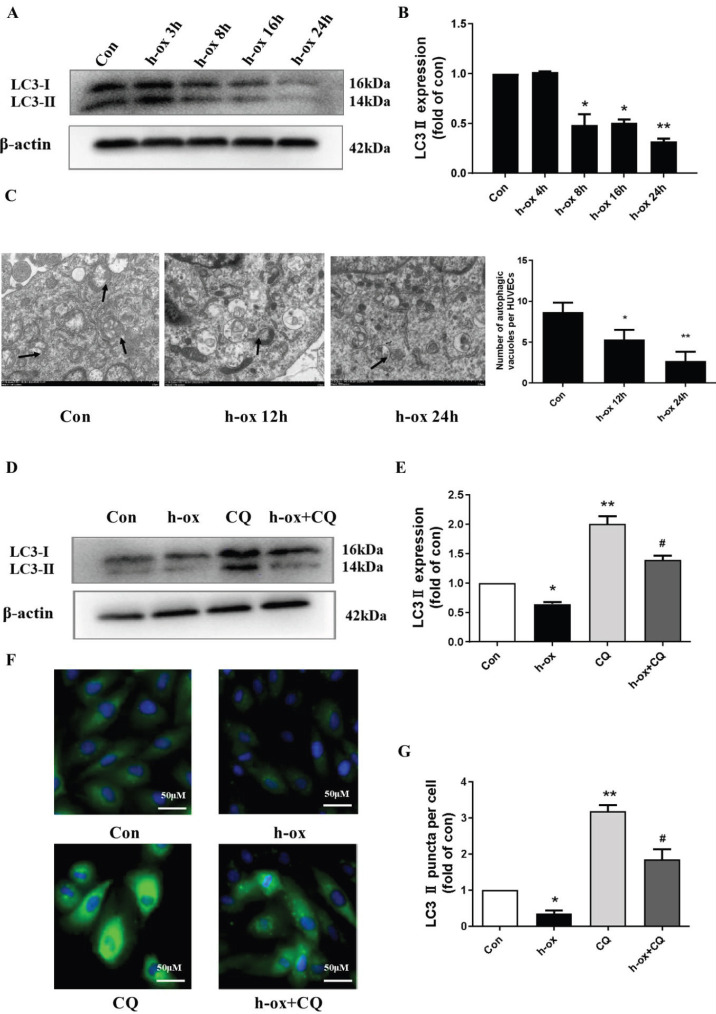Figure 4.
High ox-LDL inhibited autophagy in HUVECs. A and B: HUVECs were exposed to high ox-LDL (50 μg/mL) for the indicated times, and LC3-II protein levels were measured by Western blotting. Expression was quantified by densitometry using ImageJ software (n=3). C: HUVECs were exposed to high ox-LDL (50 μg/mL) for the indicated times, and autophagic vacuoles (black arrows) were detected by electron microscopy (n=3). D and E: HUVECs were treated with high ox-LDL for 16 h in the presence or absence of CQ (10 μM). CQ was added 8 h before the expression of LC3-II in the cell lysates was measured by Western blotting. Expression was quantified by densitometry using ImageJ software (n=3). F and G: Changes in LC3 immunofluorescence. Expression was quantified using ImageJ software (n=3). Autophagic vesicle accumulation was quantitated using ImageJ software and is expressed as the number of autophagic vesicles per cell. The data are shown as the means±SDs (* P<0.05 vs. the control group; # P< 0.05 vs. the high ox-LDL group; ## P<0.01 vs. the high ox-LDL group). LC3, microtubule-associated protein 1 light chain 3; CQ, chloroquine

